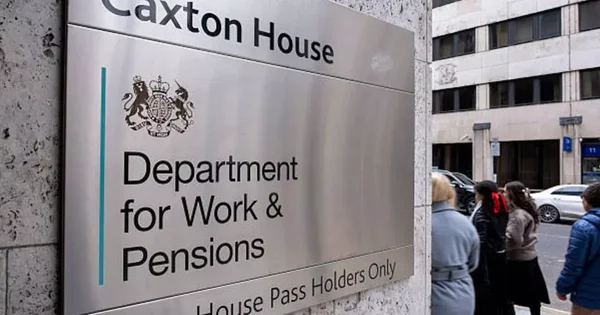The amount varies dramatically based on your property value, whether you're a first-time buyer, and if it's your main residence. Since recent threshold changes, many buyers are paying substantially different amounts than before.
Need help calculating your exact stamp duty quickly? The UK's first personal tax app, Pie tax, offers instant calculations tailored to your specific situation. Or if you're just here to get to grips with it all, let's break it down!
What is Stamp Duty and When Do You Pay It?
Stamp Duty Land Tax (SDLT) is a tax you pay when buying property or land over a certain price in England and Northern Ireland. You must pay it within 14 days of completing your purchase.
Scotland has its own version called Land and Buildings Transaction Tax (LBTT). Wales uses Land Transaction Tax (LTT). The rates and thresholds differ in each country.
SDLT applies to both freehold and leasehold properties. This is true whether you're buying outright or with a mortgage.

How Much is Stamp Duty UK Tax: Current Rates Explained
Stamp duty uses a tiered system, meaning you pay different percentages on different portions of the property price. This progressive structure increases the tax burden as property values rise.
The current standard residential rates are:
• 0% on the first £250,000
• 5% on the portion between £250,001 and £925,000
• 10% on the portion between £925,001 and £1.5 million
• 12% on any portion above £1.5 million
For example, if you buy a house for £400,000, you'll pay nothing on the first £250,000. You'll then pay 5% on the remaining £150,000, totalling £7,500 in stamp duty.
First-Time Buyer Relief: Pay Less or Nothing
First-time buyers receive a special discount on stamp duty. They pay nothing on the first £425,000 and 5% on the portion between £425,001 and £625,000.
This could save you up to £11,250 compared to standard rates. I still remember the relief when this saved me nearly £5,000 on my first flat in Manchester.
To qualify, you must never have owned property anywhere in the world before. You must also plan to use the property as your main home.
If your property costs more than £625,000, you'll pay the standard rates on the entire amount. This creates a significant cliff-edge in the tax system.

Higher Rates for Additional Properties
Buying a second home or buy-to-let property triggers an extra 3% on top of standard rates. This applies to the entire purchase price, not just portions above thresholds.
The rates become:
• 3% on the first £250,000
• 8% on the portion between £250,001 and £925,000
• 13% on the portion between £925,001 and £1.5 million
• 15% on any portion above £1.5 million
If you're replacing your main residence, you might still need to pay the higher rate initially. You can claim a refund if you sell your previous home within 36 months.
Non-UK Residents Pay Even More
Since April 2021, non-UK residents pay an additional 2% surcharge on top of all other applicable rates. This means non-residents buying additional properties face rates up to 17%.
The residency test considers whether you've been in the UK for at least 183 days. This period must fall within the 12 months before purchase.
This surcharge aims to cool foreign investment in UK residential property. It's part of wider government efforts to make housing more accessible to residents.

Commercial Property Has Different Rates
Commercial property stamp duty rates are more favourable than residential rates. They start at 0% on the first £150,000 of the purchase price.
The rates then rise to 2% on the portion between £150,001 and £250,000. Any portion above £250,000 is taxed at 5%. For a detailed breakdown of tax on a £100k salary, see this comprehensive guide.
Mixed-use properties (part residential, part commercial) also qualify for these rates. This can potentially save significant sums on higher-value purchases.
Stamp Duty Exemptions Worth Knowing
Some property transfers don't attract stamp duty at all. These include properties under £40,000 and property transferred due to divorce.
Property left to you in a will is also exempt from stamp duty. This is because inheritance tax may apply instead.
Multiple Dwellings Relief can reduce your tax bill when buying multiple properties in one transaction. There are also special reliefs for certain company transactions and charitable purchases.
Always consult a tax professional about potential exemptions. Many buyers miss out on legitimate savings by not exploring all available reliefs.
Final Thoughts
Stamp duty represents a significant extra cost when buying property. It requires careful budgeting, especially for higher-value homes and additional properties.
The progressive band structure means the tax increases substantially with property value. Remember that stamp duty must be paid within 14 days of completion.
Always factor in the correct stamp duty amount when calculating your budget. This helps avoid last-minute financial pressure during an already stressful process.

Pie tax: Simplifying How Much is Stamp Duty UK Tax
Getting confused by stamp duty calculations is completely normal. The rules are complex and change frequently with government policy adjustments.
The UK's first personal tax app, Pie tax, makes it simple with an instant SDLT calculator. It factors in all your circumstances, including first-time buyer status and additional property surcharges.
Our tax experts can spot potential reliefs you might qualify for. This could save you thousands of pounds that many buyers miss through lack of specialist knowledge.
We'll guide you through the entire process, from calculation to completion. This ensures you never pay more stamp duty than necessary.
Want to see how much you could save? Our friendly app walks you through the process in minutes.









